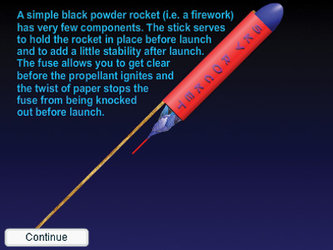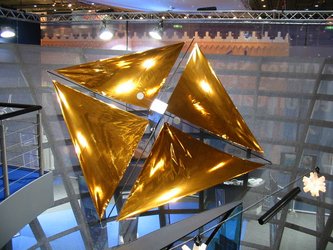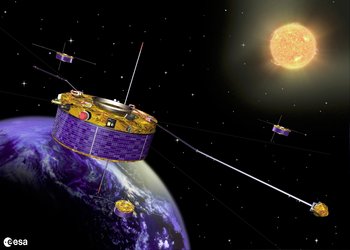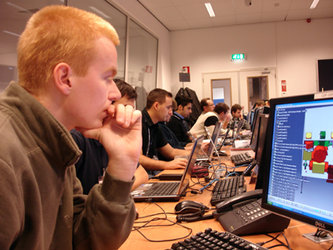Nuclear powered rockets
or Swords into ploughshares
Many spacecraft, especially those that travel deep into the solar system, beyond the practical use of solar cells, already make use of nuclear power. They use radioactive material to heat one junction of a thermocouple and so generate electricity by the thermoelectric or Seebeck effect. This is then used to power the electrical systems of the spacecraft, rather than to provide propulsion. The amount of power generated this way though is quite low; nothing higher than around 600 W has ever been flown. In comparison ESA’s Smart 1 used solar cells to generate the 1.2 kW necessary to power the ion thrusters that carried it to the Moon.
However plans have been made to fly fully functional nuclear reactors in order to provide propulsion, as well as power some spacecraft. The simplest design just involves passing hydrogen propellant over the core of a standard, if light weight, nuclear reactor. The hydrogen propellant would then leave the reactor through the nozzle, just like a standard rocket. The exhaust would not be radioactive (in most proposed designs) but its temperature and so the specific impulse of the rocket, would be limited by the melting point of the materials used in the reactor core. A specific impulse of around 900 s might be achievable.
Animation of nuclear engines:












